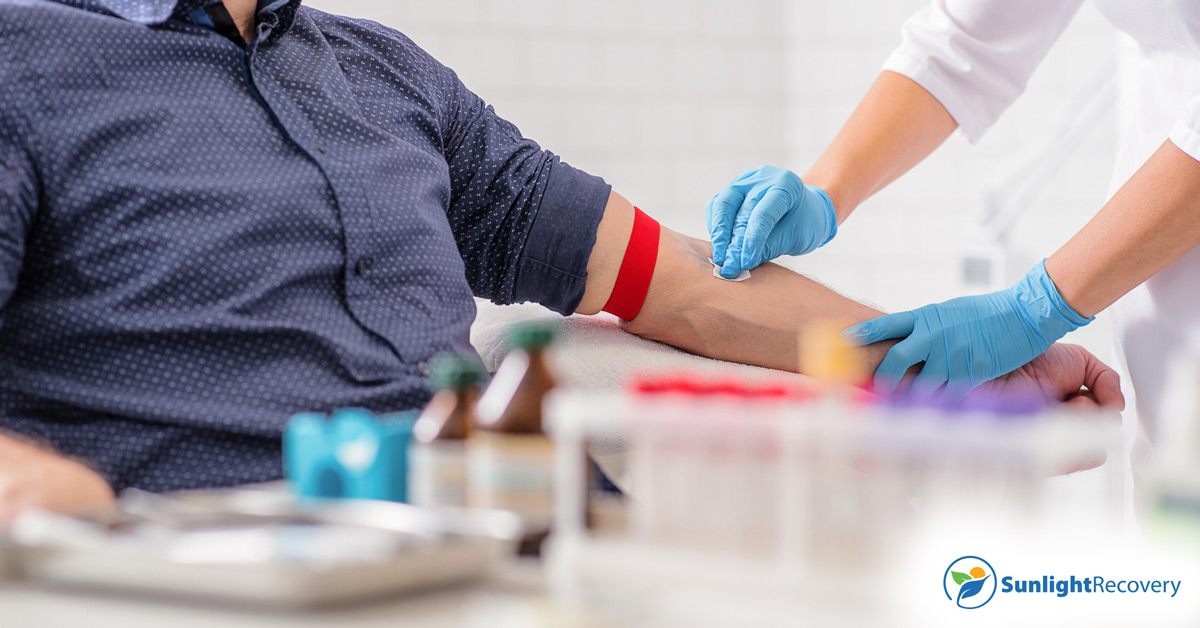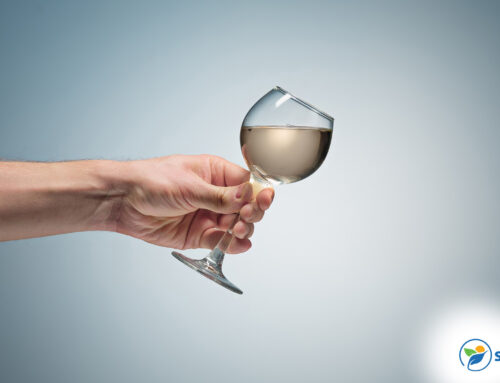How long does alcohol last in your body? Whether you indulged in a glass of wine at dinner or had a few beers with friends, understanding how long alcohol remains detectable is important for safe drinking, driving and social nights out.
Fortunately, science has provided us with some helpful insights on this topic, and we’re here to break it down for you. Read on to learn more about how long alcohol stays in your body and if it’s possible to change the results of your alcohol test.
How Long Does Alcohol Stay in Your System?
When it comes to alcohol in our system, many factors come into play, including age, weight, metabolism and the amount of alcohol consumed. However, one thing is certain: alcohol doesn’t stick around forever.
Your liver does most of the work to break down the alcohol. A healthy liver can process about one drink per hour; that’s a 12-ounce beer, five ounces of wine, or 1.5 ounces of your favorite spirit. But everyone is different, and factors like your genes, liver health and overall tolerance affect how fast your liver deals with alcohol.
The National Institute on Alcohol Abuse and Alcoholism estimates that alcohol can be detected in our blood for up to six hours after we’ve had a drink. In other methods, it can be found in urine for up to 80 hours and even in our hair for up to 90 days or more.
It’s crucial to remember that even when alcohol seems to have left our system, its effects on our thinking and coordination can linger. So, before hopping behind the wheel or operating any heavy machinery, it’s always best to confirm enough time has passed since your last drink to alleviate any adverse effects.
Reasons and Timing for Alcohol Testing
Alcohol consumption can have serious consequences — not just for your health, but also for those around you. In some situations, it may be necessary to figure out if someone has been drinking for safety or legal reasons.
With an alcohol test, you can get a clearer picture of someone’s alcohol consumption and assess potential risks. Here are some common reasons why someone might ask you to take an alcohol test:
- Employment screening: Ensuring a safe and productive work environment.
- Legal and regulatory compliance: Meeting the requirements for specific professions or situations.
- Post-accident testing: Determining if alcohol played a role in accidents or incidents.
- Rehabilitation and treatment programs: Monitoring progress and compliance in recovery.
- Probation and court-ordered testing: Ensuring compliance with court orders for alcohol-related offenses.
- Personal reasons: Assessing sobriety, tolerance or safety to drive.
Different testing methods may be more appropriate depending on the situation, so it’s important to know what options are available to you. Read on to understand the different types of alcohol testing and how they’re used.
Types of Alcohol Tests and Detection Periods
In truth, different tests exist to detect alcohol levels in your system. Each test has its own detection window and some tests are more reliable than others.
To help you understand the different alcohol tests and their detection periods, let’s take a closer look at each one.
Breath Tests: Detecting Alcohol Levels
How long does alcohol stay in your breath? The alcohol breath test has been around since 1954, and is probably the best-known method of alcohol detection. The portable Breathalyzer is now commonly used to test for alcohol levels in drivers suspected of driving under the influence (DUI).
To measure your blood alcohol content (BAC), a Breathalyzer measures the amount of alcohol evaporating from your mouth as you breathe into the device’s mouthpiece. Breath tests can detect alcohol up to 24 hours after your last drink.
In most jurisdictions, the legal limit for driving is 0.08% BAC, and a Breathalyzer test result showing a BAC above that limit can be used as evidence against you in court. But it’s worth noting that these devices aren’t very accurate at higher levels. They work best for detecting low blood alcohol levels.
Blood Tests: Measuring Alcohol Concentration
Blood tests are the gold standard for determining alcohol concentration in the body. They’re accurate, reliable and trusted by both law enforcement and medical professionals. But what exactly is the process?
In a blood test, a trained professional draws a small blood sample from the arm and analyzes it to find the alcohol concentration in the bloodstream. This concentration is expressed as a percentage, with 0.08% being the legal driving limit in most places.
But as aforementioned, alcohol can only be accurately detected in your blood for up to 12 hours after your last drink. After that, the concentration decreases and becomes too low to measure precisely. This is because the body gradually eliminates alcohol from the bloodstream at a rate of 0.015g/100mL/hour per hour.
That’s why timely testing is crucial to ensure the most accurate results when measuring alcohol concentration through blood tests. So, if you need to take a blood test, do it as soon as possible after your last drink to get the most precise reading.
Urine, Saliva and Hair Tests: Detection Windows for Alcohol
While blood tests are the most popular method for measuring alcohol concentration, alternative approaches using urine, saliva and hair tests are also employed. These tests offer varying detection windows, each with valuable information about alcohol consumption. Let’s take a closer look at the detection time frames for each test.
- Urine tests: Can detect alcohol consumption for up to three to five days after the last drink, depending on factors such as metabolism and hydration levels. They are often used in workplace testing and rehabilitation programs.
- Saliva tests: Offers a shorter detection window, typically identifying alcohol use within 24-48 hours after the last drink. Their non-invasive nature and ease of use suit them for on-site testing and roadside sobriety checks.
- Hair tests: Provide the longest detection window, potentially revealing alcohol consumption up to 90 days after the last drink, depending on hair growth rates and sample length. This longevity makes them particularly useful for monitoring long-term sobriety and identifying habitual consumption patterns.
Can Alcohol Test Results Be Manipulated?
When faced with an alcohol test, it’s natural to wonder if there’s a way to beat the odds. Keep in mind that different tests serve varying purposes, and those that measure alcohol in system concentration are more accurate than ones to detect its presence.
It’s not uncommon for people to delay the test or tamper with the sample in hopes of cheating the system. However, most testing organizations are well-prepared, with strict procedures to prevent such attempts. Don’t fall for misconceptions like using mints or sucking on a penny to fool a Breathalyzer. A well-executed alcohol test is tough to deceive, and trying to do so might lead to serious consequences.
If you’re struggling with alcohol consumption, don’t hesitate to seek help from a professional or a support group. Taking the first step towards recovery will pave the way for a healthier, happier life without the weight of alcohol dependency.
Taking the First Step: Finding Help for Alcohol Addiction
Dealing with alcohol addiction can be overwhelming and challenging, and it’s not uncommon for individuals to resort to cheating on alcohol test results to avoid facing the issue. However, it’s important to realize that this behavior is a red flag that something more significant is at play, and seeking professional help is crucial.
We at Sunlight Recovery strive to help each client attain recovery in their own way, providing personalized treatment plans tailored to the person’s specific needs so they can achieve lasting sobriety.
Don’t let alcohol addiction continue to control your life. Take the first step towards recovery by contacting Sunlight Recovery today.






